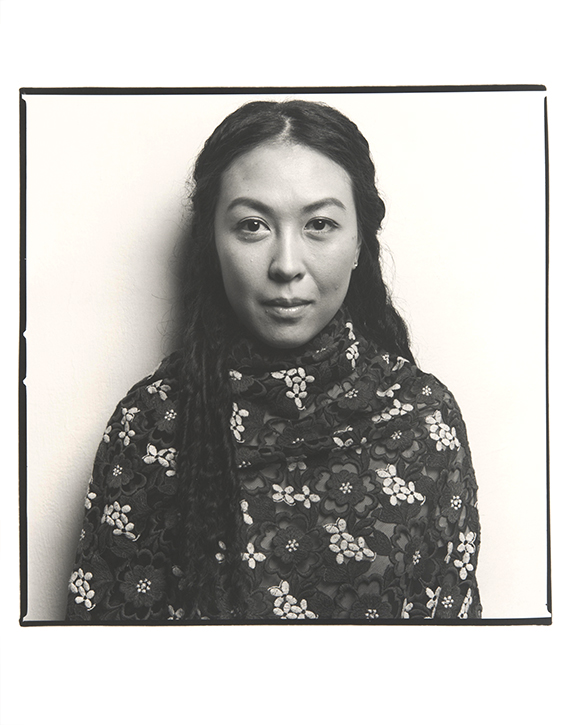 |
|
Seeman Ho, photo by Andrew Tang. |
 |
|
Seeman Ho, photo by Andrew Tang. |
Seeman Ho (Two Dogs and Eleven Cats) is a Hong Kong artist who focuses on ecology, environmental protection, animals, and other issues. She has been active in the local art scene since the end of the 1990s and has created many works. The mediums she uses include multimedia exhibitions, illustrations, texts, music, etc. The artist Lau Lee-lee described her painting style as a "sweet terrorist." Behind the bright and colorful colors and patterns is an artist concerned about garbage recycling, animal rights, genetically modified food, and other related issues. Critics described her as a "terrorist," probably because the issues behind her work are all "inconvenient truth." Especially in the early 2000s, the Hong Kong public has not yet discussed these issues. Seeman Ho has lived in Mui Wo since the late 1990s. She once said in an interview, "Actually, I have a password to communicate with nature, with animals, flowers, or insects. (...) Understanding the walking route of ants and the spirit of sacrifice by cicada flowers is more biological, but what is close to witchcraft is to get various enlightenments from the wind and gain insight into the philosophy of life. This gave me a reflection on eating meats and vegetables and an understanding of the sadness behind flowers."[1] She also hoped to be a biologist: "I have been studying biology. The current creation is "spreading beneficial bacteria," such as promoting environmental protection or even making people reflect more from the perspective of nature. "[2]
She does not just use "ecological" issues to create. In an interview with the research team, she shared that artistic creation is not a propositional creation. She said the directness of the creation and the simplicity of action are equally important, even with a sense of ritual. Her pursuit of simplicity can be seen in her name: "I have two dogs and 11 cats, so I named myself after it!"[3]
Seeman Ho graduated in Fashion Design from the Hong Kong Polytechnic University in 1999. Her graduation work was to make clothes by soaking, bleaching, and boiling the fallen leaves picked up on the mountain. In 2003, she won the Hong Kong Art Biennale Award for the "A Tree to Be Found" exhibition, and art museums and private collections collected her works. Her works have been exhibited in different cities around the world. At the same time, she has also published paintings and articles in local newspapers. She published books include "Seemanho. Making Clothes. Making Herbal Soup" (2005), "Book of Flowers (2002), "Circle Round the Universe" (2012), and "They Are the Eyes of Equals" (2013), which is known as the first native animal book in Hong Kong, etc. Besides art creation, she served as the radio and webcast host of animal rights protection programs and established FOMC (Friends of Mui Wo Cattle) to promote cattle conservation in the region. This research will focus on her exhibition "A Tree to Be Found" and briefly introduce the art project "Reclamation exercise," curated by her, and her text/graphic works created around ecological issues.
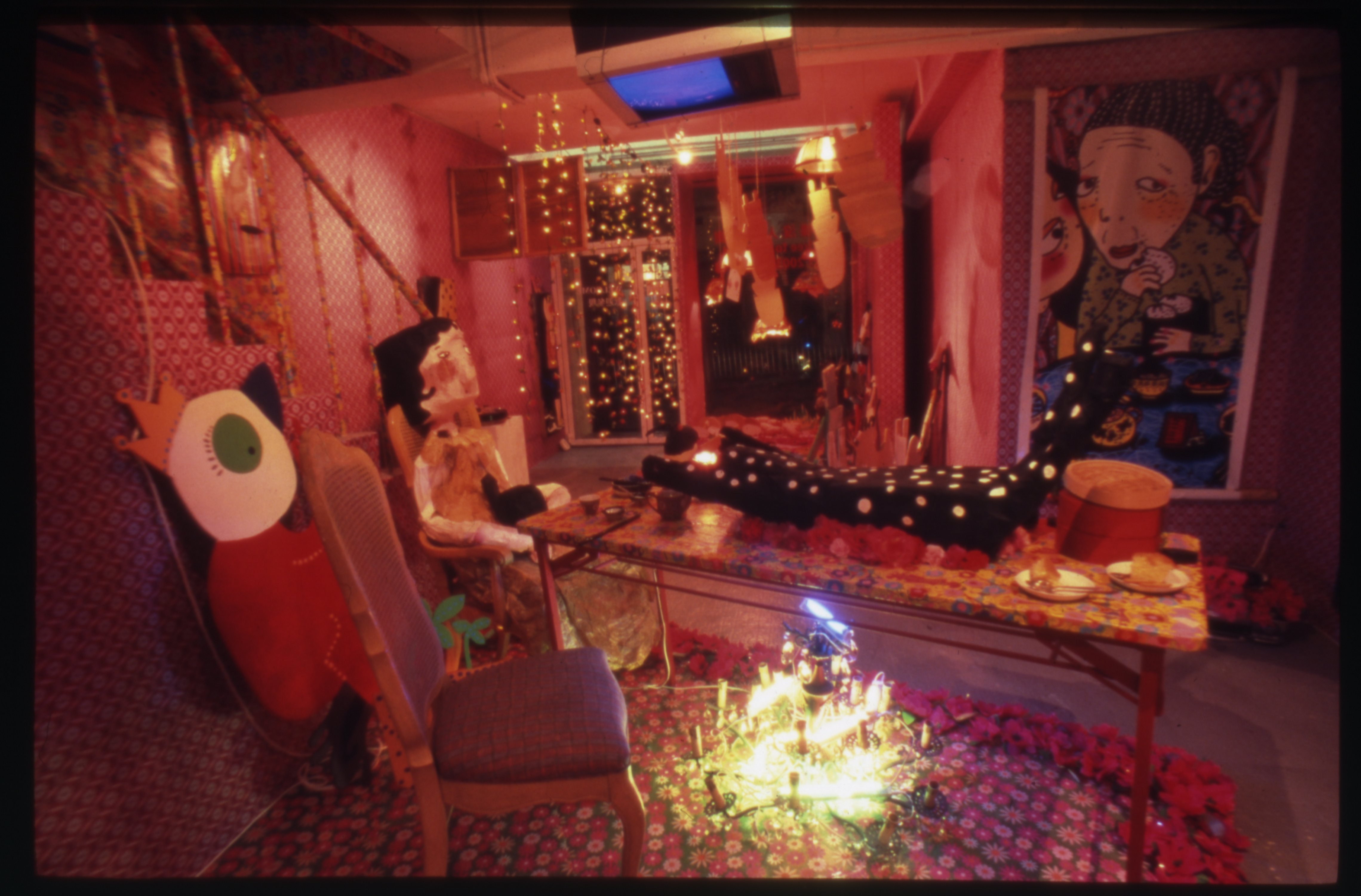 |
|
"A Tree to Be Found" exhibition at Para/Site in 2003. Photo courtesy of the Hong Kong Museum of Art. |
"A Tree to Be Found" started with genetic food on the dinner table. Seeman Ho was the brain of the entire exhibition. She arranged the concept and installations of the exhibition. She invited Hoi Chiu to make body performances, Amy Chan to design lighting, Peter Suart to compose music, and Camkam to handle the photography part. The exhibition was held from 30th May to 20th June 2003, at Para/Site Art Space, when it was still located on Po Yan Street, Sheung Wan. The exhibition's opening was on the evening of 30th May, and there were four performances on 30th May, 6th, 13th, and 20th June.
Originally it was a multimedia exhibition, performance artist Eve Yip and director Pung-Leung Kwan were invited to make a short film. However, the multimedia exhibition was postponed to July due to the SARS pandemic. For more than a month, Seeman Ho exhibited a stage-like space comprised of paper sculptures, wood sculptures, and modern paintings, which were strange and fascinating at the same time. There was a story behind this space: "A boy who grew up in a city, has liked to make tiny coffins out of scrap paper since he was a child... There is a tree in the building where he lives... The boy's mother cooks genetic food and wants him to eat until he vomits, and keeps saying that it is good for him. That is an irony...I also talked about vegetarian food. Because of the food chain, vegetarian food is actually carnivorous... The boy walks under the tree and sees the dead horse and sheep. He cuts the sheep’s skin and horse skin and tells stories... There is another girl who keeps showing up and telling stories with the boy... The girl likes to cut homework paper to make the dolls and doll’s clothes. In the end, the girl puts the doll in the boy’s coffin and buries it in the mud dug under the tree. It can be said that sad things are buried, or seeds are planted and another tree will grow in the future. " Therefore, Seeman Ho covered the floor and walls of Para/Site in Shang Wan with floral paper and divided the space into different parts, like different sections of a stage play.
In an interview with the research team, the artist recalled: "At that time, the installations and wallpaper were processed slowly after arriving at the exhibition venue. It took a lot of energy. I could not make this exhibition if it weren’t for leungpo’s find my flower paper sculptures at my home in Mui Wo."
Different symbols repeatedly appeared in this exhibition: paper dolls, chairs, dining tables, insects, sheep, horses, trees, etc. The installations in the exhibition space actually echo the text created by the artist. The artist designed more than a dozen postcards and texts along with the exhibition, revealing the real world behind the colorful world. In the artist’s text, the story is divided into ten sections, in a weird tone (the plot implies the Yu Lan Festival, the Chinese Ghost Festival is the background of the story), telling a story about humans, insects, food, and trees:
(1)Waiting to cook guava: A boy finds the guava tree downstairs (“Every night he folded a lot of scrap paper into tiny coffins. Put them into his drawer (...) On the ninth day of July, he climbed up the tree. Putting on strange clothes, he acted out a story.”);
(2.1)Rice becomes sausages (A): It's the monologues and dialogues of the bug, the caterpillar, and the earthworm on the tree ( “(...) I was a speck of white rice. Stuck on the underside of a green leaf. Someone said I was a speck of rice and someone said I was an egg. Day by day, I grew inside the egg. Finally, I became a thing, without hair, without hands, without feet. Someone said I was a sausage and someone said I was a worm. (...) When I reached the foot of the tree, I saw yet another worm. (...) I greeted him loudly. He saw me and smiled. His body was very long and inched up from the soil slowly. Dark, damp. (...) Eat soil, eat soil that tastes no good. I really didn’t want to turn into an earthworm. (...)”) ;
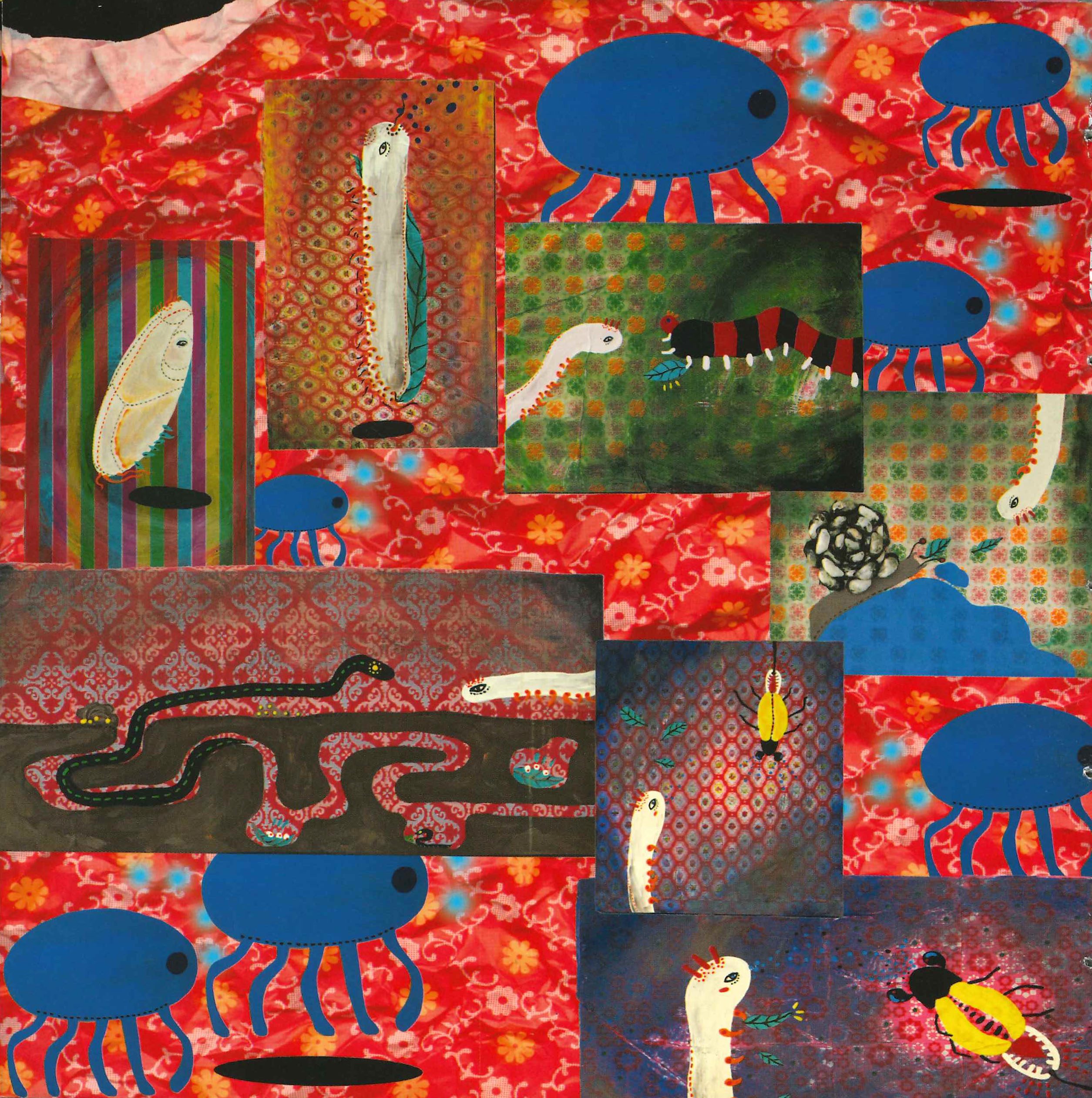 |
|
Rice becomes sausages (A) - Postcard. Published by Para/Site. |
(2.2)Rice becomes sausages (B): This part is the self-discovery process of the worm. ( “Her reply was so soft. Not only could she talk and glow. She could also dance in the dark. I really wanted to dance with her. (…) She flew away and the world became dark again. (...) But when I woke up, these layers gently blew away. Crawling out bit by bit. I took a look at myself. I had feet and hair, and a pair of wings extending. With fancy brown wings, I was no longer a worm. I was a firefly. (...)” ;
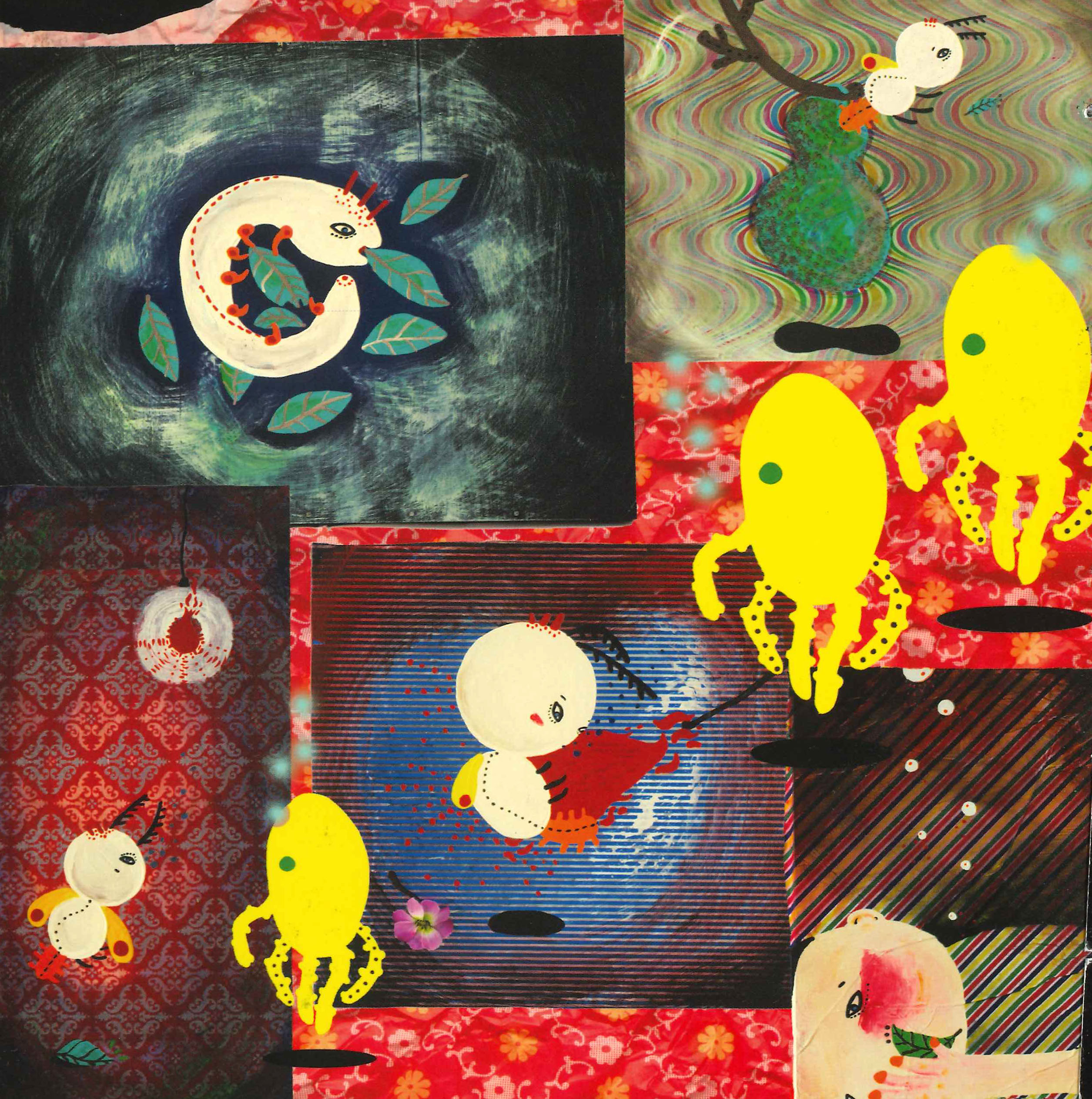 |
|
Rice becomes sausages(B) - Postcard. Published by Para/Site. |
(3)These perhaps taste the best: The boy goes back home. “(…) Switching on that television bought from China, I watch stories that are replayed and replayed. Taking off my socks, I discover a well-matched couple. One picked his nose and the other spat. (...)”;
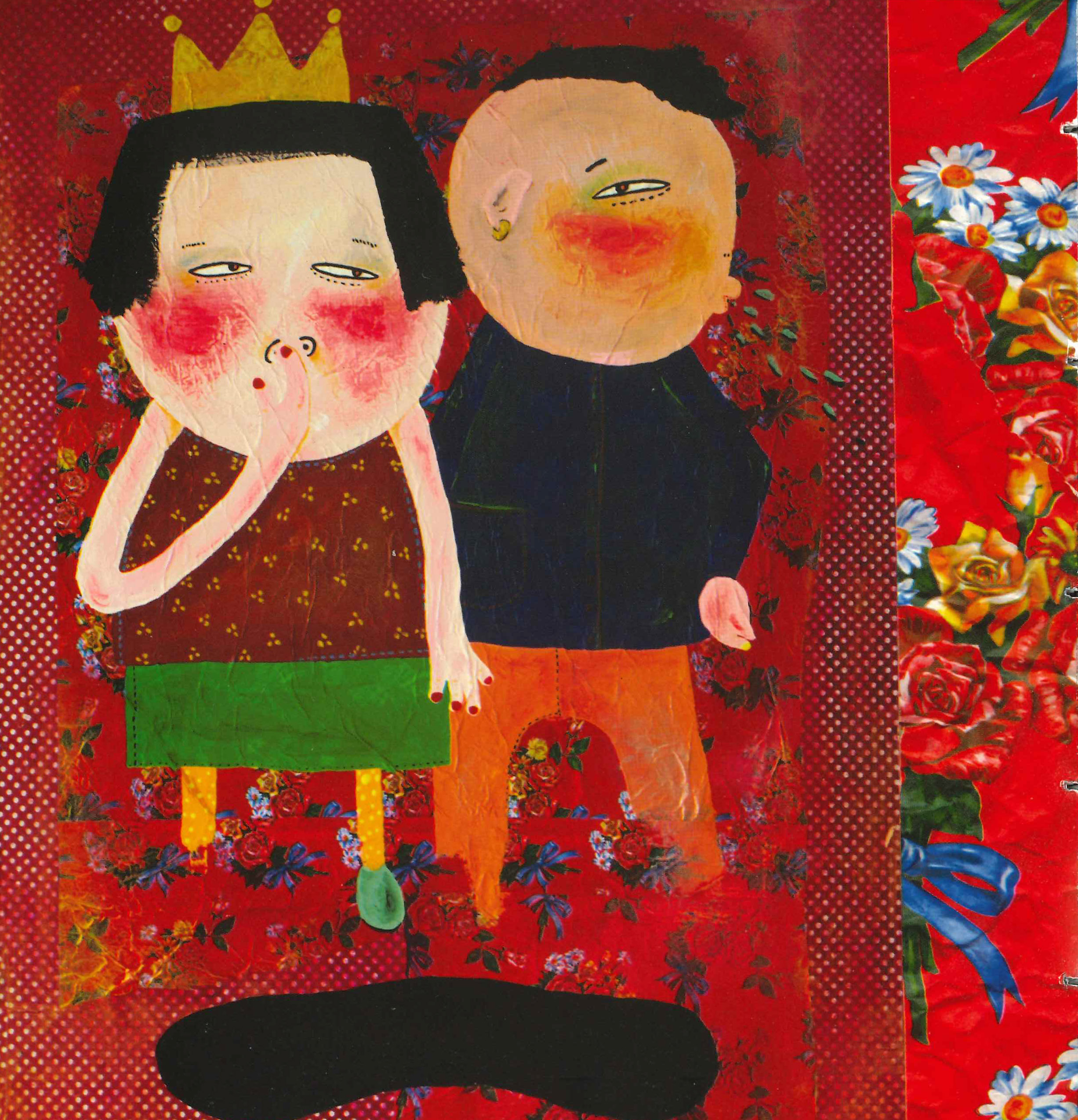 |
|
These perhaps taste the best- Postcard. Published by Para/Site. |
(4.1)A genetically engineered banquet turns into gluttony (A): The story of the boy and his mother at the dinner table (“My mother sat on the opposite side and lectured happily. She said this was Man’s punishment. They should support the protection of the environment more. My mother lectured on and on, while his mind became more and more blank. At a glance, I saw an empty chair. The chair was shaking. (...)”);
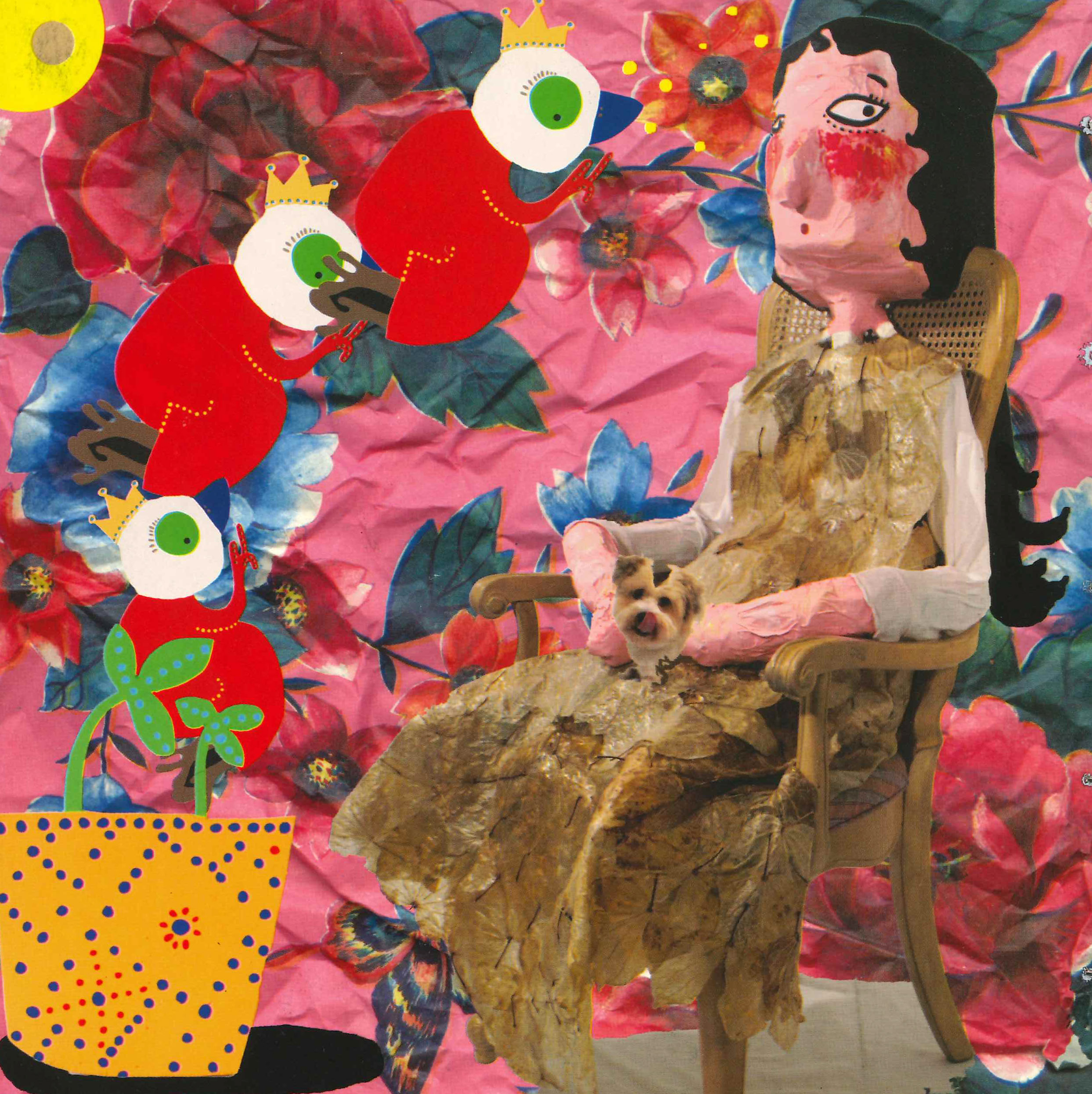 |
|
A genetically engineered banquet turns into gluttony (A)- Postcard. Published by Para/Site. |
(4.2)A genetically engineered banquet turns into gluttony (B): At the dinner table, his brother appears in another way (“His brother’s soul returns (..) As long as you see the remaining soil and thin roots, You can easily find his brother’s heyday (...) When his brother’s soul returns, his mother will cook meals that are especially rich. His brother might be the ripe yellow flowers.”);
(5.1)Just fear that you smell too good (A): The boy plays a scene about a squirrel and a little rabbit on the tree. (“He picked up the discarded squirrel skin from the kitchen table. Puts it on, and crawls back under the guava tree on the fourth floor of the building (...) A little rabbit turns up and hops over to that animal. Sniff, sniff, she hops away (...)”);
(5.2)Just fear that you smell too good (B): In the story of the boy, both the monkey and the wild cat avoid the squirrel until the skunk appears (“Why the wild blooms along the road could be so fragrant. From that day onwards, Squirrel and Skunk went for adventure.);
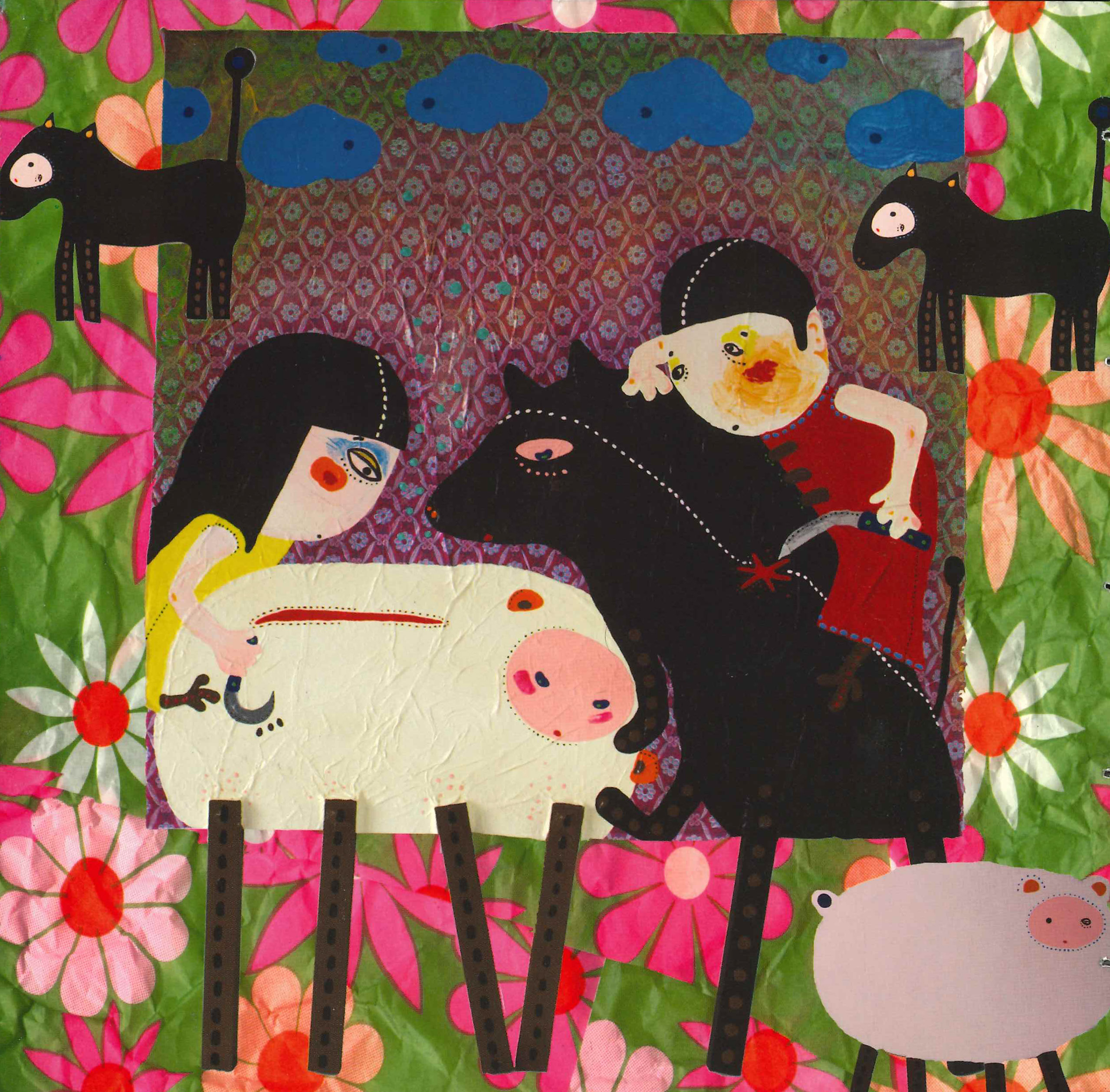 |
|
Just fear that you smell too good (B)- Postcard. Published by Para/Site. |
(6)Use beans and beancurds to say goodbye: The squirrel and the skunk ran into a horse and a sheep (“Suddenly Horse asked Sheep ‘What taste best?’ Sheep said grass, Horse said rice. Sheep said leaves and Horse said cherries. She said oranges, he said tangerine. She said beancurds, he said beans. Sheep was angry and said loved eating horse meat. Horse was mad and said loved eating sheep meat (...)”);
(7.1)Vegetarian or not (A): The boy goes home and sees his mother is cooking (“Dissecting his brother you could see dogs inside, dissecting dogs you could see chickens inside, dissecting chickens you could see vegetables inside. Take the vegetables into your stomach (...));
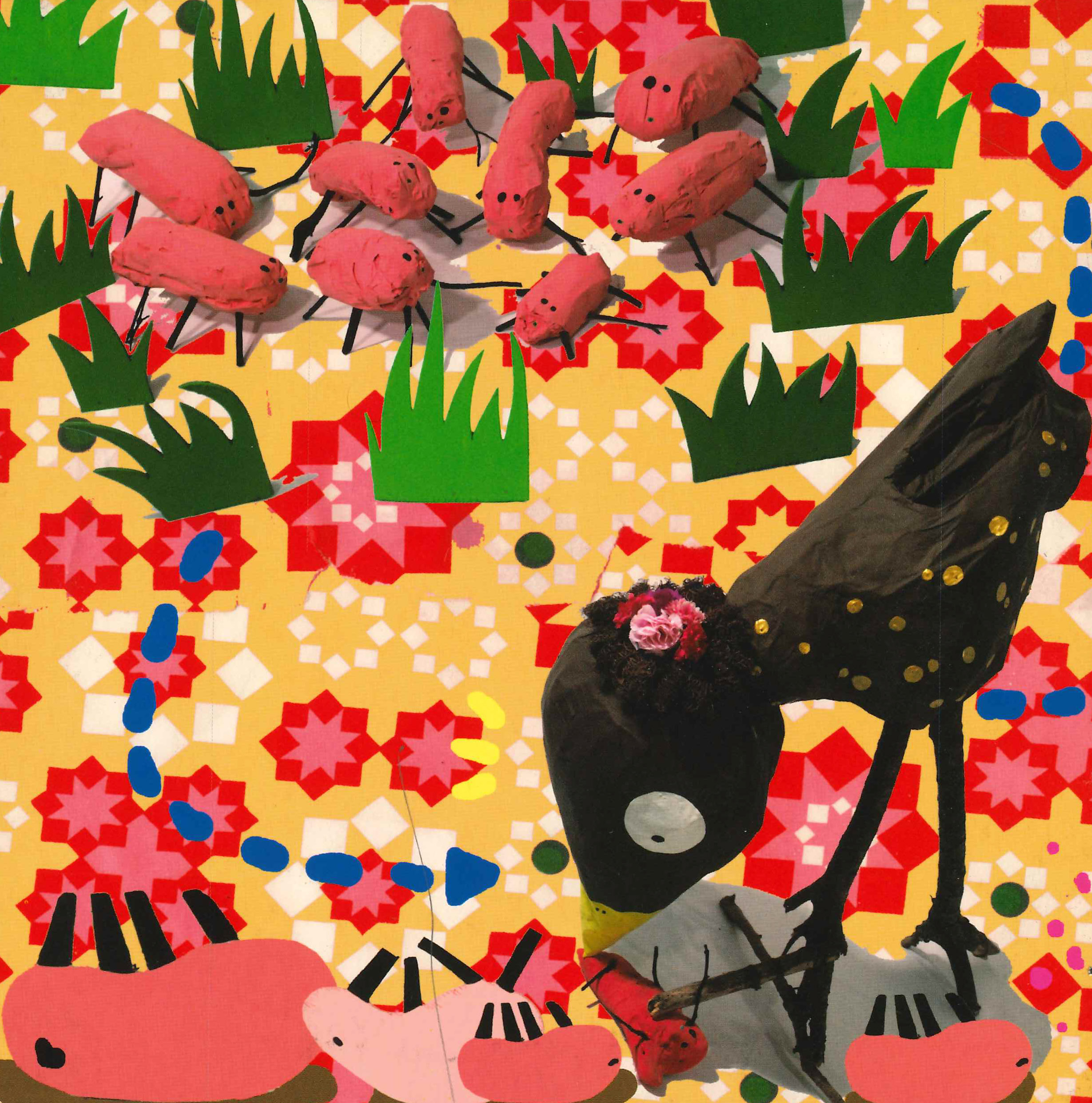 |
|
Vegetarian or not (A)- Postcard. Published by Para/Site. |
(7.2)Vegetarian or not (B): The food chain cycle continues (“Worms eat vegetables, chicken eat worms, man kill chickens, feed to dogs. Dogs are killed, dissect dogs, cut open stomachs of chickens, and vegetables found inside can still be eaten.”);
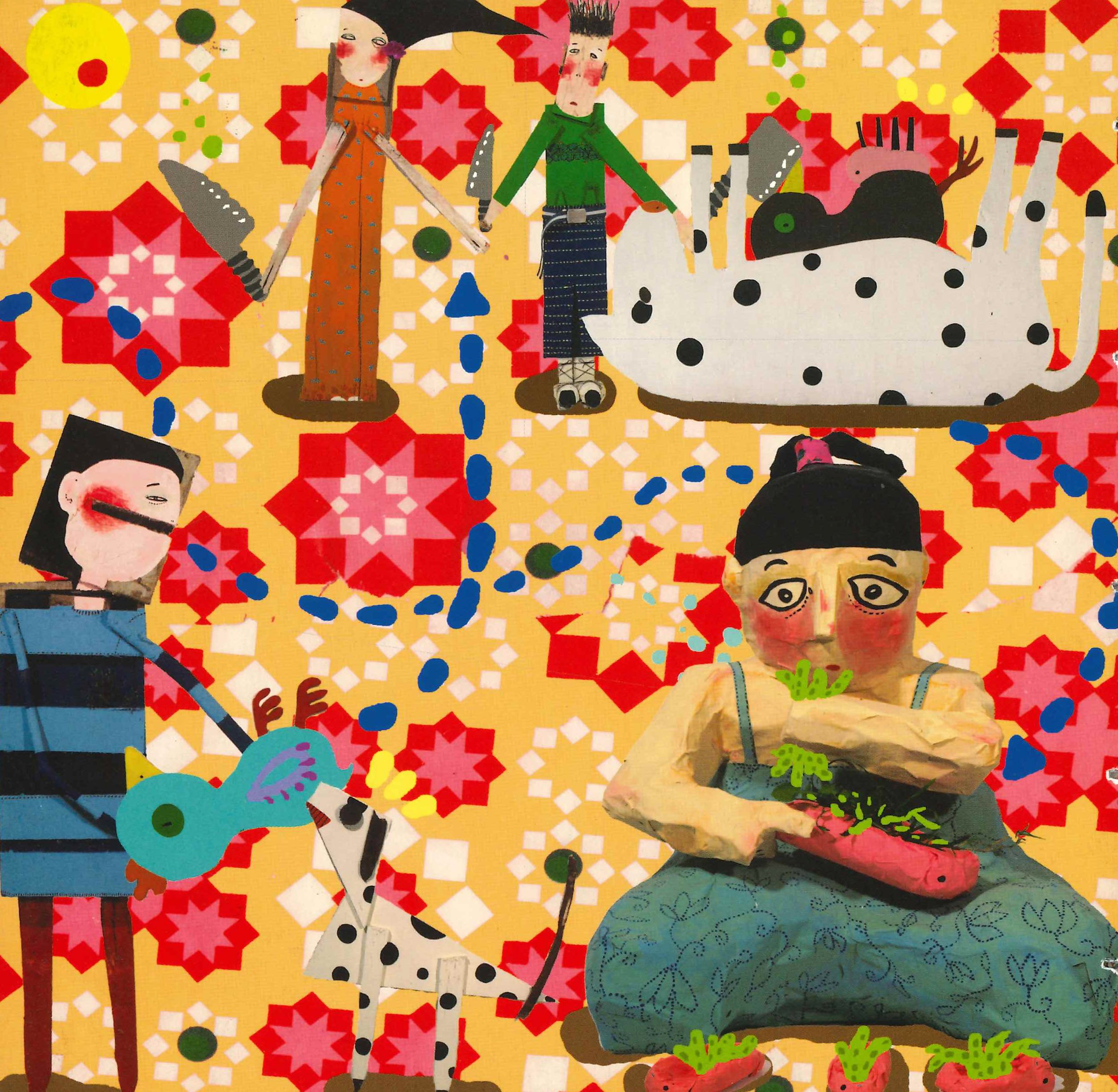 |
|
Vegetarian or not (B) - Postcard. Published by Para/Site. |
(8)Final endurance: The story goes on like a dream (“I saw myself cycling. Circling a guava tree, round and round (...));
(9)The guava is too ripe: On the tenth day of July, he found a paper doll (“She put away her bike and stood under the guava tree looking up. The red fruit changes green, some had already fallen to the ground. she dug a hole under the tree and took out some dolls from her bag.);
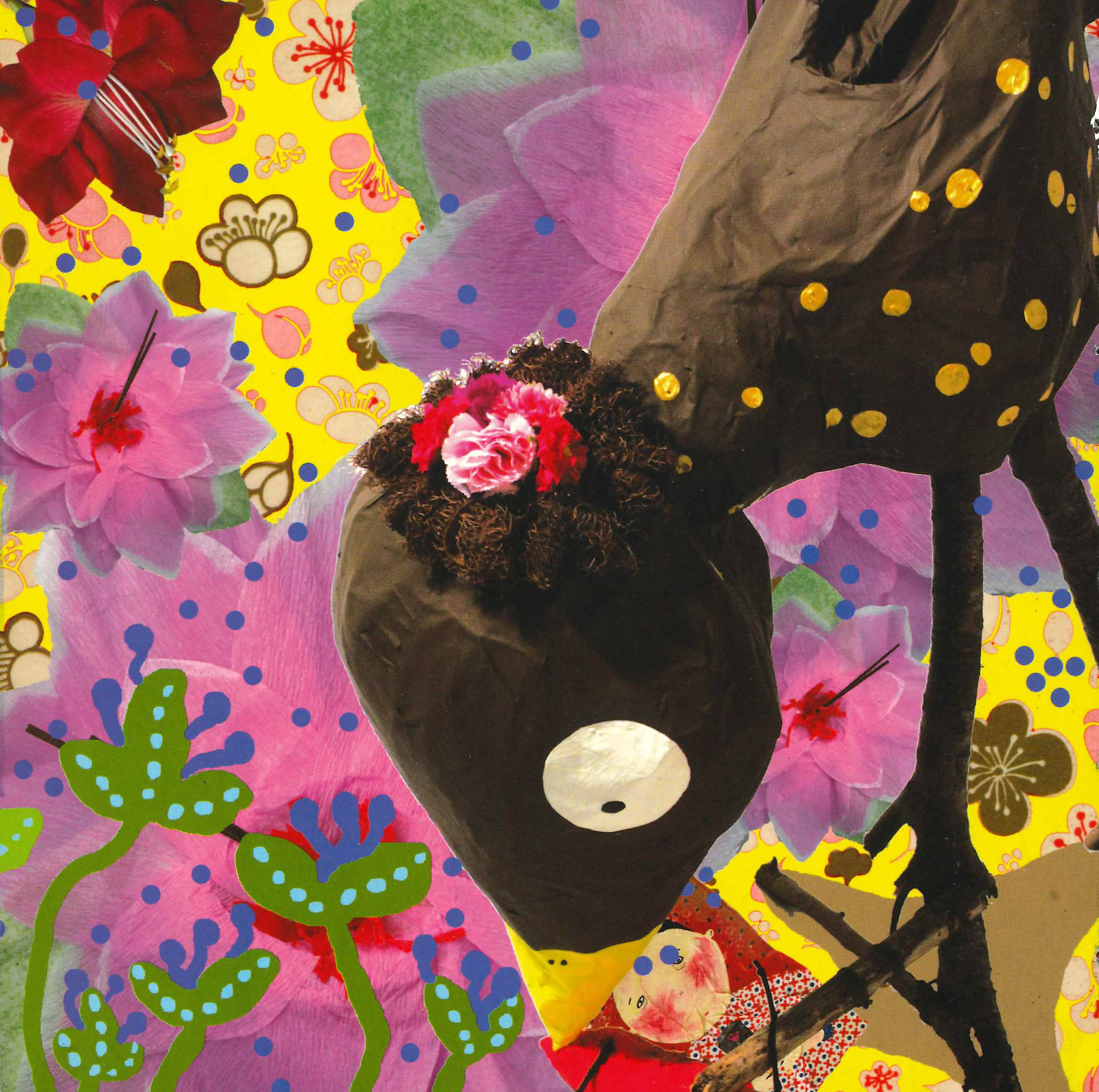 |
|
The guava is too ripe- Postcard. Published by Para/Site. |
(10)Starting from the very first time, secret: Then under the tree, the boy met her (“That was the tenth day of July, both he and she stood under the tree. Both he and she discover each other… … She held out her hand to show the paper doll. And puts it into his tiny coffin. (...)”)
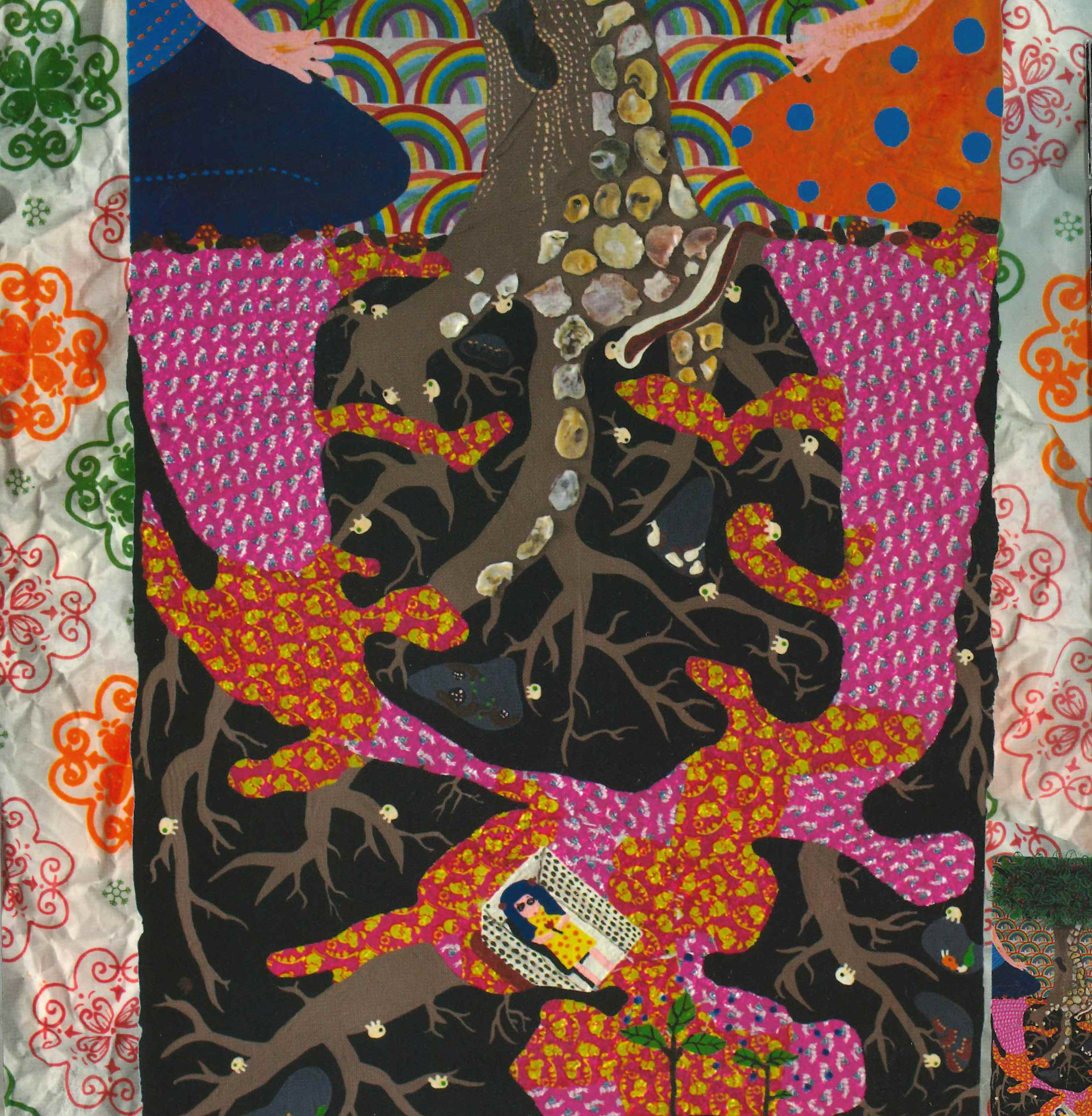 |
|
Starting from the very first time, secret. Published by Para/Site. |
Although "A Tree to Be Found" was held in Hong Kong during the 2003 SARS outbreak, it still caught the public's attention and won the Hong Kong Art Biennale Award that year. However, Seeman Ho did not increase the number of her art creations. In an interview in 2010, the artist said: "Hong Kong’s art in the social form of production and consumption, tends to regard the creation result (i.e., artwork) as the ultimate goal of creation; thus, the creative process will repeat attempts "unscrupulously," waste materials unconsciously, create rubbish, and affect the natural environment. "Art" has become a shield for this destructive behavior."[4] During the interview with the research team, the artist also pointed out another contradiction: "I have published many books before, which seems to be a bit not environmentally friendly. I try to put it in action unless the book is significant. For example, the book "They are the eyes of equals" (2013) is a local animal welfare book that no one had talked about before, so I thought it was interesting to print and publish it."
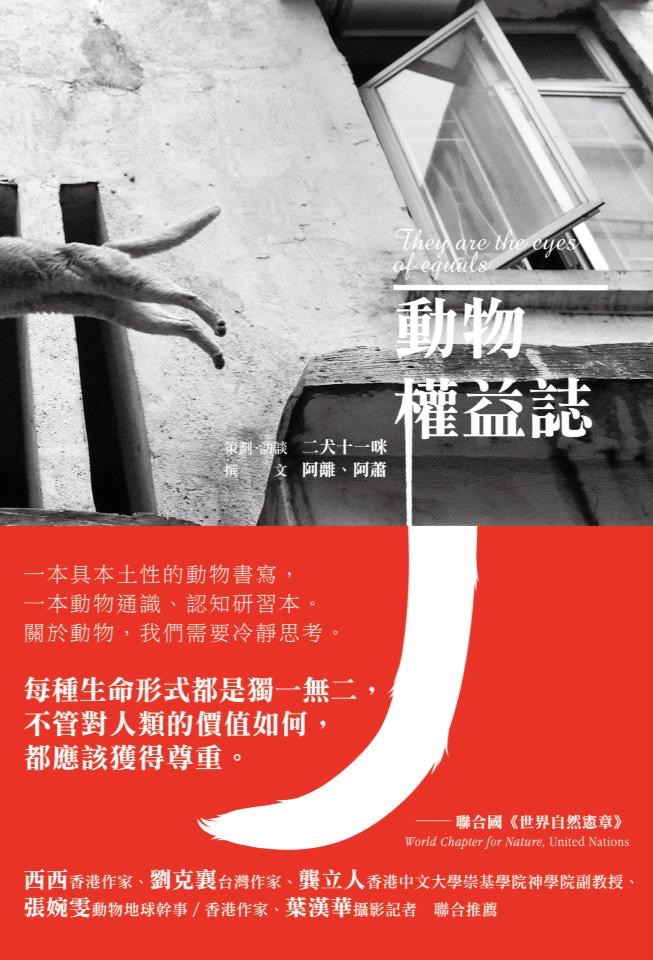 |
|
The cover page of “They are the eyes of equals.” Published by Joint Publishing HK. |
Speaking of participation and action, Seeman Ho planned the "Reclamation exercise” project in 2010, a local exercise on glass recycling. The artist was provided with thousands of glass bottles from a glass recycling company and then worked with the project participants. After the exhibition, the exhibits were returned for long-term teaching purposes or converted to environmentally friendly floor tiles, or returned to the glass recycling company to ensure that project abandoned no bottles. From the artist's perspective, she wanted to minimize waste and ecological damage while reflecting on environmental conservation and nature by looking at what they had abandoned to reflect on their lifestyles. "Destruction and regeneration are actually a cycle." The artist told the research team.
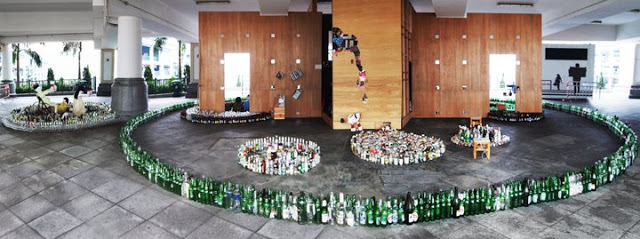 |
|
"Reclamation exercise” Eco Art Exhibition (2010). Photo courtesy of the artist. |
 |
|
In the "Reclamation exercise" project, Yuen Hon Wai and participants performed impromptu performances in physical form. Photo courtesy of the artist. |
Seeman Ho began to study Buddhism in recent years and published "Circle Round the Universe" in 2012. The book was based on Master Hong Yi and Feng Zikai's book "Hu Sheng Hua Ji” (Protect Life Paintings). The artist reinterprets the paintings and understands contemporary environmental issues such as factory animals, laboratory animals, and shark hunting from a new perspective. In this book, she presents problems humorous, such as shooting mosquitoes with the title "Assassination" or drawing a wedding banquet scene in red with blood.
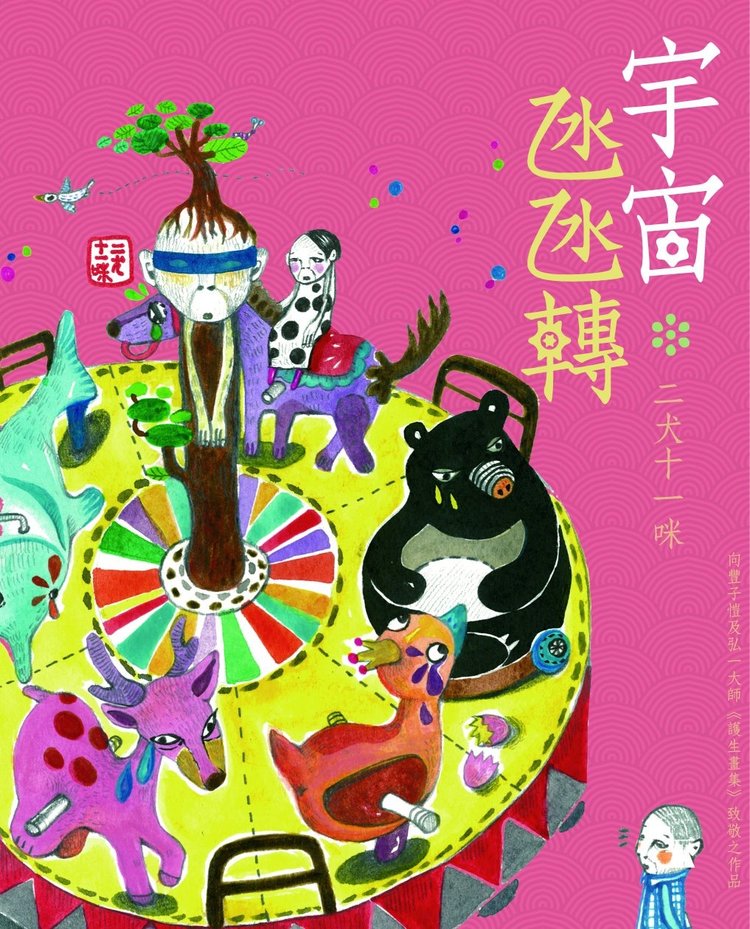 |
|
The cover page of “Circle Round the Universe," published by Skywalker Press. |
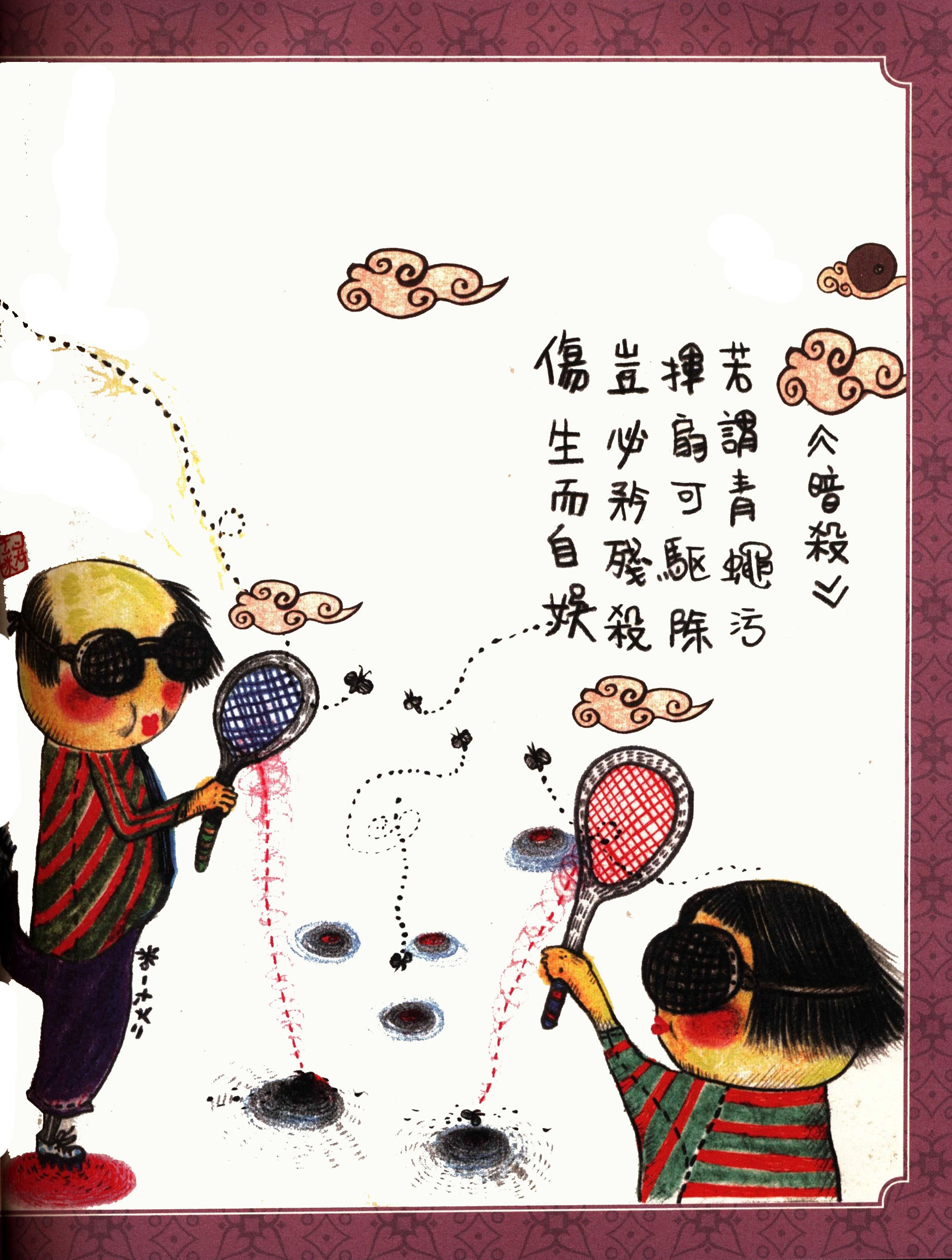 |
|
The inside page of “Circle Round the Universe," published by Skywalker Press. |
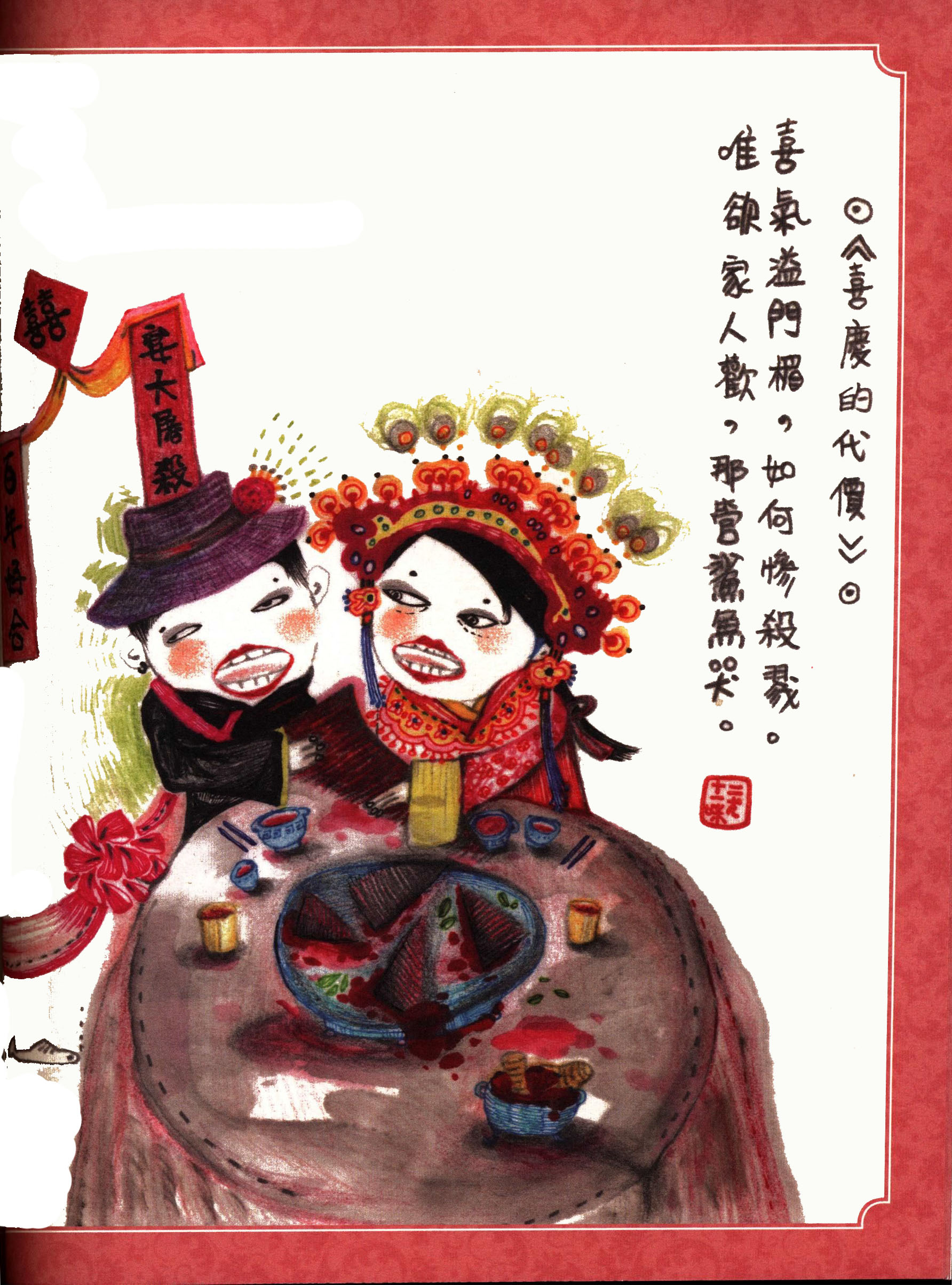 |
|
The inside page of “Circle Round the Universe," published by Skywalker Press. |
If you understand Seeman Ho more deeply, her early illustrations have revealed various fantasies about nature. For example, in her black-and-white illustration book “When Girl Meets Raindrop” (1999), she drew a fish on Goldfish Street with simple lines that gained its knowledge because it was thrown high. She humorously pointed out the situation of animals that also lived in this crowded city. Or maybe the idea of a dragonfly flying over a bench on the lawn of Prince Edward in "When Girl Meets Snowflake" (1999). In the beginning, she learned about animals through sympathy and did not exclude them from the city and herself.
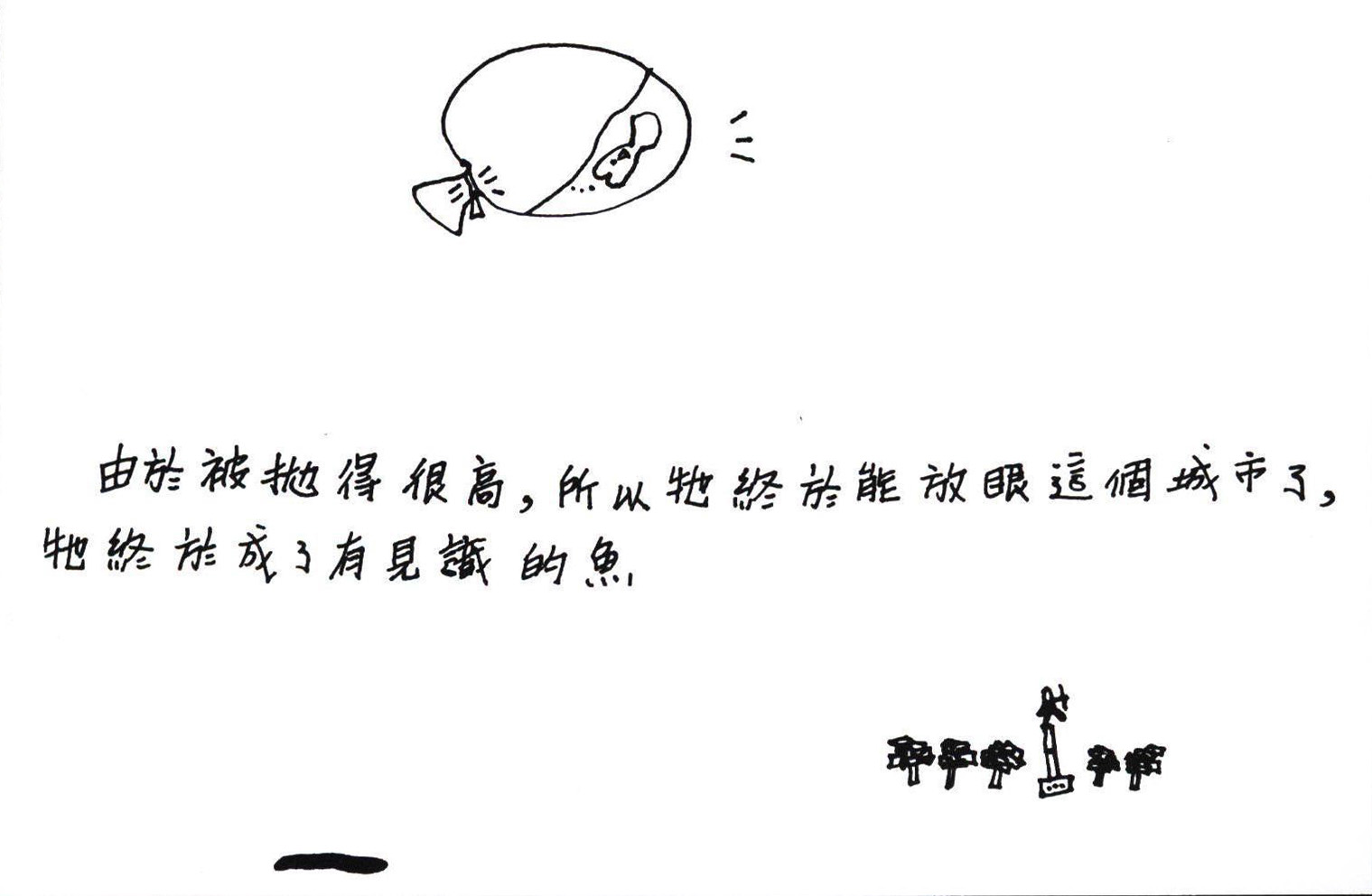 |
|
The inside page of “When Girl Meets Raindrop,” published by Step Forward Multi Media Co Ltd. |
 |
|
The inside page of “When Girl Meets Snowflake,” published by Step Forward Multi Media Co Ltd. |
© Unless otherwise stated, all photos courtesy of Seeman Ho. All rights reserved.